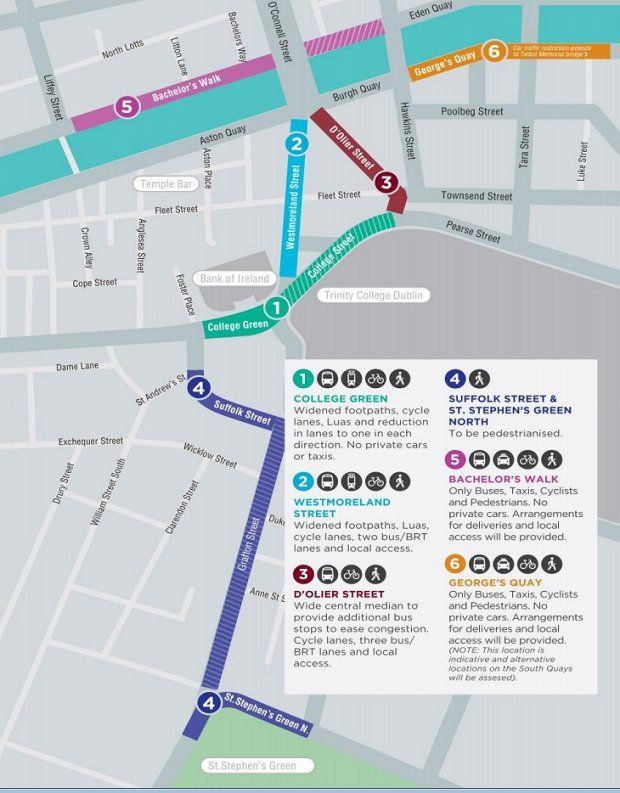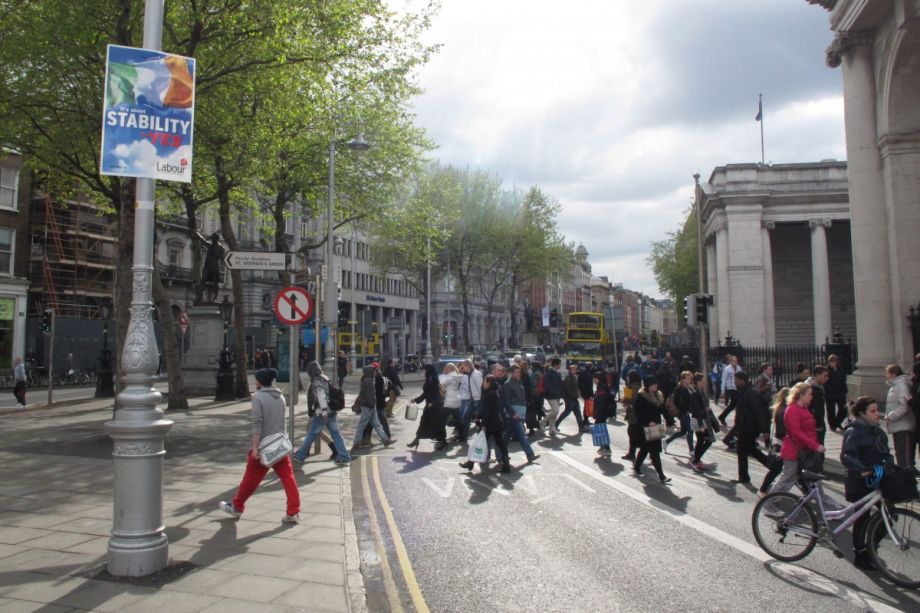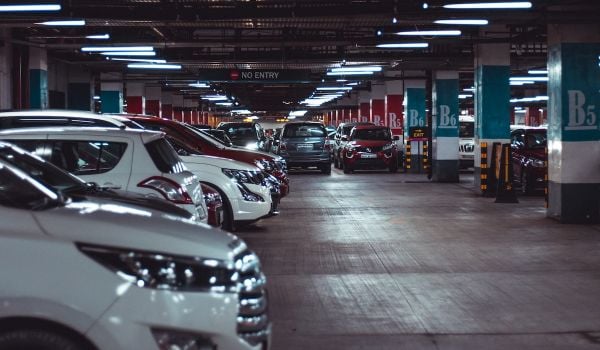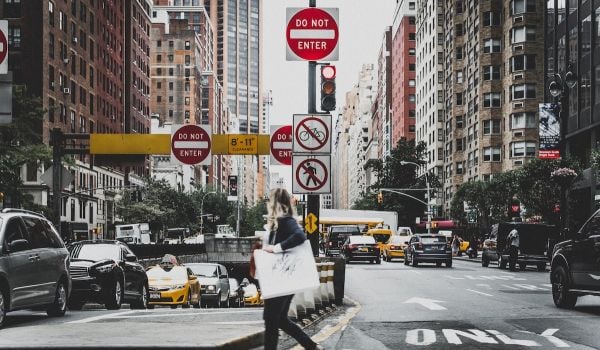When most cities announce they want to increase the number of people taking transit and biking and walking, they tend to do so with little action or funding to actually accomplish that goal. Dublin, on the other hand, is poised to take a major step to ease congestion and encourage use of alternative transportation: Ban personal cars in sections of the downtown core.
The Dublin City Council and the National Transport Authority’s proposed vehicle restriction is part of a broader, €150 million transit, cycling and pedestrian improvement plan. Outlined in the Dublin City Centre Transport Study, officials write they want to, “ensure that Dublin develops into a more livable city, where the impact of traffic is minimized.” The proposed changes would occur on several major routes in the city center east of City Hall, west of Trinity College, north of St. Stephen’s Green and south of River Liffey.
“The objective behind the proposals is to encourage more people onto more sustainable means of transport, in order to cater for the additional 42,000 morning-peak trips into the city centre that are anticipated by 2023,” the NTA’s Sara Morris tells me by email. She also explains that the changes will make room for a new tram line through the neighborhood that will begin operations in 2017.
As is nearly standard in modern cities, congestion is a major problem in Dublin — in its 2014 ranking of global congestion, GPS maker TomTom put Dublin at 10th worst in the world. It’s unlikely that will get better on its own, given the Central Statistics Office’s prediction that upwards of 400,000 new residents will move to the greater Dublin in the next 16 years.
“The city centre can only continue to function effectively if we offer those working and living in Dublin, as well as visitors, more choices in how they access and move around the capital,” Owen Keegan, Dublin City Council chief executive told The Journal.

According to NTA’s 2014 cordon count of people traveling in the city center, 48.4 percent use public transportation, 33.3 percent drive, 10.2 percent walk and 5.4 percent ride bikes. The city wants to shift that mode share to 55 percent public transportation, 20 percent private car, 10 percent walking and 15 percent cycling in just two years.
The Transport Study recognizes that, “the private car will continue to be an important choice of mode for people traveling to the City Centre … However, it is essential that the current pattern of vehicular movement both through and within the City Centre is examined to ensure that road space is utilized efficiently.”
The plan is open for public comment until July 16th when the council will make their final decision. Public comment has only been open for a few days, but Morris says the “response to date has been largely supportive.”
It is difficult to imagine city councilors in a major U.S. city pushing for private car bans on any scale and even harder to imagine public support for the proposals. But, Paul White, executive director of New York City nonprofit Transportation Alternatives, says he can imagine it at some point in lower Manhattan’s future.
“It’s probably a few years off, but I think it can absolutely work in New York where we have so much more in common with European cities. We have narrow, historic streets, security concerns and checkpoints and good transit, walkability and bikeablity,” says White. (Paris announced car-free goals similar to Dublin’s last year.)
He says the proliferation of services such as car-share, bike-share and Uber is also increasing the feasibility of private car restrictions. “There are just so many mobility options other than the private car. It’s easier to answer the question of, ‘what are people going to do?’”
If car bans do catch on in the U.S., White thinks they’ll be driven by the private sector more than city councils.
“In lower Manhattan … there are developers and real estate people who want to see the area more attractive to millennials and commercial tenants who in this day and age are more concerned about walking and biking. There’s such a demand for livable streets. When you’ve got high density, limited street space, you’ve got to maximize.”
The Works is made possible with the support of the Surdna Foundation.

Josh Cohen is Crosscut’s city reporter covering Seattle government, politics and the issues that shape life in the city.
Follow Josh .(JavaScript must be enabled to view this email address)



_600_350_80_s_c1.jpg)


_on_a_Sunday_600_350_80_s_c1.jpeg)










